Plant a Laurel: [Dates, Soil, Irrigation, Pests and Diseases]
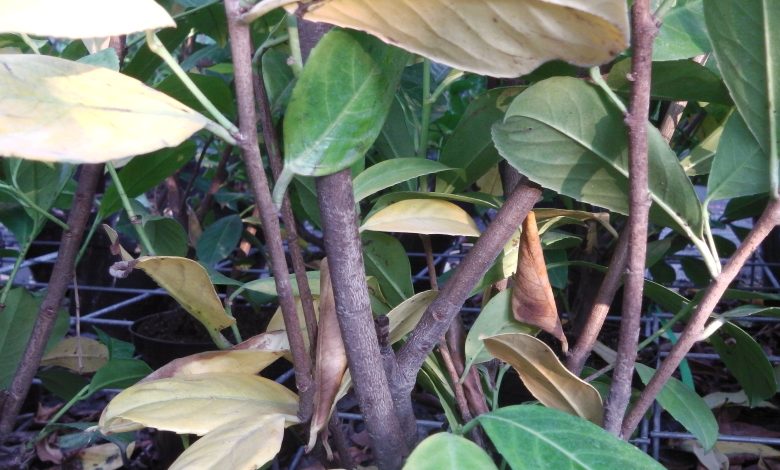
Important points to Plant a Laurel:
- When? We can plant laurel throughout the year, but preferably in spring and early summer.

- Where? It withstands heat and drought well. Ideal in a place that receives between 4 and 6 hours of sunlight.
- Growing time? A laurel can give the first leaves after a year, if the land is good and constant watering.
- How do we prepare the land? It adapts well to different types of soils, although it prefers deep ones, with good drainage and a good supply of organic matter.
- How do we water? Ideal, drip irrigation.
- How do we sow? Here step by step.
- How do we harvest? The leaves are used for cooking and can be harvested at any time once the tree is established.
- Plagues and diseases? Aphids, spider mites, anthracnose, mildew, powdery mildew, mealybugs.
Did you know that in ancient Rome bay leaves were a symbol of glory, power and fame?
Bay leaves not only have an interesting historical component, but are also used as aromatic plants or given culinary use.
If you are looking for a simple and undemanding crop,laurel is one of the best alternatives.
In this article we tell you how to do it in the simplest way.
What do we need to plant laurel?
When should it be sown?
The best way to plant laurel is through cuttings. plant them preferablyduring spring or early summer.
Where?
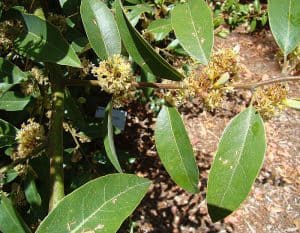 It should be exposed to a moderate amount of light to prevent it from drying out easily. This, particularly, during the summer, when the sun is quite intense.
It should be exposed to a moderate amount of light to prevent it from drying out easily. This, particularly, during the summer, when the sun is quite intense.
It is recommendedthat they receive between 4 and 6 hours of light a dayand a bit of shade in the evening.
They are not tolerant to low temperatures.
The ideal temperature is between 15 and 30 ºC constant.
How often should it be watered?
It is a plant that does not need much watering. In fact, it is preferable that the risks are scarce than that we exceed ourselves with the water. Excess moisture encourages the growth of fungi that are harmful to the plant.
It adapts very well to the lack of moisture in the soil thanks to its deep root system.
In a pot it requires more constant watering. Likewise, during the warmer seasons.
Try to keep the surface layer of the earth always moist and that will be enough.
How do we prepare the land?
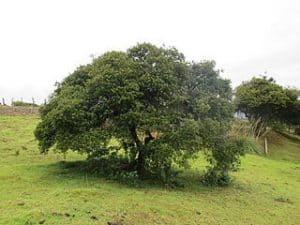 It adapts well to different types of soils, although they prefer deep ones, with good drainage and a good supply of organic matter.
It adapts well to different types of soils, although they prefer deep ones, with good drainage and a good supply of organic matter.
For cultivation in a pot we must use a pot with a minimum depth of 50 cm and a diameter of 60.
Optimum pH is between 5.0 and 7.0
How to plant laurel step by step
Get laurel cuttings to plant.
Cut a laurel branch of approximately 1 cm and place it in a glass of water. Within a few days, roots will begin to emerge. When these reach an acceptable length, you can plant it in your pot or garden.
Clear the ground
Extract weeds and remains of previous crops and all kinds of residues to ensure that your laurel receives the adequate amount of nutrients.
All plants must be pulled out by the roots to prevent them from growing back.
prepare the ground
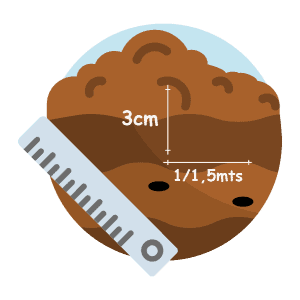 Moisten the soil before planting. This will facilitate the root development of the cuttings. Likewise, if you decide to sow seeds, the moisture in the soil will prevent the seed from moving easily.
Moisten the soil before planting. This will facilitate the root development of the cuttings. Likewise, if you decide to sow seeds, the moisture in the soil will prevent the seed from moving easily.
Fertilize the soil. Spread a layer of humus over the soil.
Put the cutting in the ground
Bury it 5 cm deep, ensuring that the soil is flush.
If you sow seeds, bury them to a maximum depth of 3 centimeters and cover them lightly.
If you plant outdoors, try to keep a separation distance of between 15 and 30 centimeters between each plant.
water often
Make sure that the soil is always moist, but without producing puddles.
Fertilize frequently
Add compost once, during the spring.
If you prefer, you can also feed your plant with worm castings to make sure it has the necessary nutrients.
Prune your plants regularly
Although not strictly necessary, pruning will help shape the plant, as well as contain its size and remove dry branches.
Protect your plant and give it good maintenance
 Check your plants regularly; this to prevent them from contracting pests and other diseases. If you like, you can apply a fungicide spray to counteract mold.
Check your plants regularly; this to prevent them from contracting pests and other diseases. If you like, you can apply a fungicide spray to counteract mold.
You can also put up a chain link mesh to protect the plants while they are growing.
To know more, you can see: Laurel cuttings.
How to harvest laurel
The leaves are used for cooking and can be harvested at any time once the tree is established.
Cut fresh branches to use directly. Never harvest more than 1/3 of the leaves at a time.
It is better to pick them early in the morning to preserve their aromatic flavor.
Laurel pests and diseases
Some of the most common pests and diseases that affect laurel are:
aphid
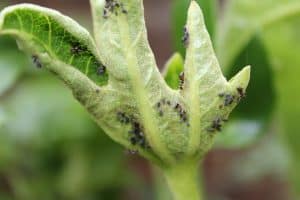 To combat the aphid, potassium soap can be applied to the underside of the plants.
To combat the aphid, potassium soap can be applied to the underside of the plants.
If the plague persists or is very abundant, we will also apply neem extract.
Red spider
The red spider appears mainly when there are high temperatures with low humidity and/or excess nitrogen in the farmland. To combat it, it is recommended to water the laurel at night by sprinkling to maintain humidity, and to use natural insecticides.
Mealybugs
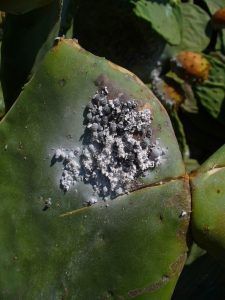 It is one of the most difficult pests to control since its body is covered with white waxy excrescences, chemical treatments are not very successful.
It is one of the most difficult pests to control since its body is covered with white waxy excrescences, chemical treatments are not very successful.
However, biological control can be done through natural enemies, such as Cryptolaemus montrouzeri, a predator of this type of insect. The release is done 15 days after any treatment, periodically in spring or early summer.
powdery mildew
It is best to install a drip irrigation system and apply horsetail as prevention.
It also works to eliminate weeds and crop residues, as well as favor the ventilation of the crop.
anthracnose
It is a disease of plants in very moist substrates. It causes spots on the leaves and necrosis on the stems, which often lead to wilting and death of the tissues.
To prevent it, it is recommended to install a drip irrigation system and apply horsetail. As well as favoring the good ventilation of the plants.
Mildew
To combat it, it is recommended to eliminate weeds and crop debris.Likewise, excess humidity should be avoided, ventilating the crop.
Horsetail extract or dusted sulfur can also be applied.
Where can I buy this tree?
We always recommend going to a nursery in the town where you live. This way you can be advised by professionals.
In case you don’t have one, you can also buy a laurel on Amazon:
LAUREL aromatic shrub of small size (2)
- Laurel (laurees nobilis) – laurel of small size
- Shipping in each wooden with ventilation. The little tree is shipped with hydrogel in its roots that guarantees hydration…
- Evergreen tree. Aromatic leaf used as a culinary seasoning
- Box dimension: 13 (width) x 12 (depth) x 47 (height) cm
€15.40 View on Amazon Prices with VAT without transport
Last updated on 2022-07-31 / Affiliate Links / Affiliate API Images
How long does the laurel live?
The laurel has a life time that exceeds 20 years, being easy to reproduce new leaves as they are pruned.
How long does it take to grow laurel?
It grows during the first 15 years of life when it will already establish an adult tree size.
How long does it take to produce fruit?
Between 5 and 10 years, the laurel will already be fully capable of producing its first fruits.
Can it be grown in a pot?
It is a plant that accepts potted planting very well, thus allowing its leaves to be used for home purposes.
How many times does the laurel produce fruit?
It flowers and bears fruit only once a year, being possible to collect the fruits during the autumn.
Should bay laurel be pollinated to obtain fruit?
Yes, it should be pollinated. This process is carried out with the support of insects that approach the tree attracted by its flowers.
How cold can laurel tolerate?
It tolerates cold climates with frosts that reach -16° C.
How many laurels can be planted per hectare?
It is estimated that laurel production can be established at a rate of 200 plant specimens per hectare.
What kind of fertilizer does laurel need?
It is established that the fertilization work must proceed with liquid products that have a high level of nitrogen in their composition.
How much heat and/or drought can laurel tolerate?
It is heat resistant. In fact, its own place of cultivation is in Mediterranean climates and the maximum optimal temperature is 30 ° C, being able to withstand more.
It is not considered suitable for it to be subjected to dry land, so in spring and summer it must be watered but without flooding.
These articles may interest you
- Holly: [Cultivation, Irrigation, Care, Pests and Diseases]
- Acer Campestre: [Cultivation, Irrigation, Associations, Pests and Diseases]
- Acerola: [Cultivation, Irrigation, Care, Pests and Diseases]
- Albizia Julibrissin: [Cultivation, Irrigation, Associations, Pests and Diseases]
- Albizia: [Characteristics, Cultivation, Care and Disadvantages]
- Carob tree: [Cultivation, Irrigation, Care, Pests and Diseases]
- Hackberry or Lidonero: [Planting, Care, Irrigation, Substrate, Problems]
- Hackberry: [Cultivation, Irrigation, Care, Pests and Diseases]
- Brachychiton Tree: [Planting, Care, Watering, Substrate]
- Pomegranate Tree: [Cultivation, Care, Irrigation, Substrate, Pests and Diseases]
- Jupiter Tree: [Cultivation, Irrigation, Care, Pests and Diseases]
- Silk Tree: [Characteristics, Cultivation, Care and Disadvantages]
- Marula Tree: [Planting, Care, Harvest, Irrigation and Characteristics]
- Quince Tree: [Care, Planting, Irrigation, Substrate and Pests]
- Tipuana Tree: [Planting, Care, Irrigation, Pruning, Pests]
- Tree of Love: [Cultivation, Irrigation, Care, Pests and Diseases]
- Paradise Tree: [Planting, Care, Irrigation, Substrate and Pests]
- Red Maple: [Crop, Associations, Pests and Diseases]
- Bella Sombra: [Cultivation, Irrigation, Care, Pests and Diseases]
- Boldos: [Cultivation, Irrigation, Care, Pests and Diseases]
- Bonsai: [Characteristics, Utility, Types, Meaning and Purchase]
- How often and how to water my Bonsai?
- Outdoor Bonsai: [Characteristics, Care, Types and Sun Exposure]
- Indoor Bonsai: [Characteristics, Varieties, Care and Irrigation]
- Caring for a Bonsai: [Irrigation, Sun Exposure, Pruning and Fertilizer]
- Carmona Bonsai Care: [Earth, Humidity and Pruning]
- Bonsai Pests and Diseases: How to Identify and Treat Them
- Types of Bonsai: [According to Size and Shape]
- Budleia: [Cultivation, Irrigation, Care, Pests and Diseases]
- Buxus: [Characteristics, Cultivation, Care and Disadvantages]
- Cabrahigo: [Characteristics, Cultivation, Care, Pests and Diseases]
- Callistemon Citrinus: [Characteristics, Cultivation, Care, Pests and Diseases]
- Starfruit: [Cultivation, Irrigation, Care, Pests and Diseases]
- Horse Chestnut: [Crop, Associations, Pests and Diseases]
- Casuarina: [Cultivation, Care, Pests and Diseases]
- Cedar of Lebanon: [Cultivation, Care, Pests and Diseases]
- Ceibo: [Cultivation, Irrigation, Care, Pests and Diseases]
- Chamaecyparis Lawsoniana: [Cultivation, Care, Pests and Diseases]
- Chamaecyparis: [Cultivation, Associations, Pests and Diseases]
- Canadian Poplar: [Cultivation, Irrigation, Care, Pests and Diseases]
- Black poplar: [Cultivation, Irrigation, Care, Pests and Diseases]
- Citrus: [Cultivation, Fertilizer, Care, Irrigation, Pests and Diseases]
- How to Fertilize Citrus: The Complete Guide – Sembrar100
- Citrus Cultivation in Organic Agriculture
- Citrus Diseases: [Types, Characteristics and Prevention]
- Prune Citrus: [Importance, Season, Tools, Considerations and Steps]
- Prune Orange and Lemon Trees: [Importance, Time, Tools, Considerations and Steps]
- How to Plant a Bonsai: [Steps, Growth, Care and Cuttings]
- How to Plant a Lemon Tree: Complete Guide with Images and Steps to Follow
- How often and how to water my lemon tree?
- 11 Types and Varieties of Lemon Tree Most Famous
- How to Fertilize a Lemon Tree: [Components and Needs]
- Lemon tree cuttings: [Grafts, Season, Rooting and Planting]
- The [10] Main Pests and Diseases of the Lemon Tree: How to Fight Them
- Prune Lemon Trees: [Importance, Time, Considerations and Steps]
- How to Plant Jujube: [Complete Guide]
- How to Plant Bamboo: Guide that includes [17 Steps + Images]
- How to Plant Boxwood: Complete Guide [Images + Step by Step]
- How to Plant Cinnamon: [All Steps] + Complete Guide
- How to Plant Macadamia Nut in [8 Steps + Images]
- How to Plant Pistachios Step by Step: [Guide + Images]
- How to Plant a Custard Apple Tree: [Complete Step-by-Step Guide]
- How to Plant a Kiwi Tree: Steps to Follow [Images and Much More]
- How often and how to water my kiwis?
- 21 Most Famous and Delicious Kiwi Types and Varieties
- How to Fertilize Kiwi: The Complete Guide – Sembrar100
- Kiwi Care: [Soil, Humidity, Pruning and Problems]
- Kiwi Cuttings: [Grafts, Time, Rooting and Planting]
- Kiwi blooms
- Kiwi Pests and Diseases: [Detection, Causes and Solutions]
- Prune Kiwis: [Importance, Season, Tools, Considerations and Steps]
- pick the kiwis
- How to Plant a Mimosa Tree: [Complete Guide + Step by Step]
- How to Plant a Hazelnut and Harvest Your Own Hazelnuts: [Complete Guide]
- How to Plant a Cactus: Step by Step Manual [12 Steps + Images]
- How often and how to water my cacti?
- Christmas Cactus: [Growing, Care, Irrigation and Substrate]
- San Pedro Cactus: [Planting, Care, Substrate, Irrigation]
- How to Fertilize a Cactus: Our Method – Sembrar100
- Cactus Cuttings: [Concept, Period, Rooting and Planting]
- Prune a Cactus: [Importance, Time, Tools, Considerations and Steps]
- Saguaro: [Characteristics, Cultivation, Care and Disadvantages]
- Types and Varieties of Cacti
- Transplanting a Rootless Cactus: [Method and Steps to Follow]
- How to Plant a Ficus: [Complete Guide to Planting this Tree]

![Photo of Wormwood: [Cultivation, Irrigation, Care, Pests and Diseases]](https://www.complete-gardening.com/wp-content/uploads/2022/08/wormwood-cultivation-irrigation-care-pests-and-diseases-390x220.jpg)
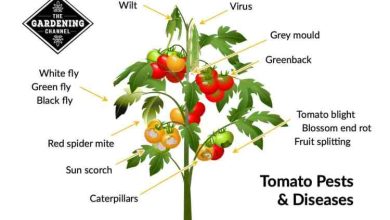
![Photo of Galan de Noche: [Planting, Care, Irrigation, Pests and Diseases]](https://www.complete-gardening.com/wp-content/uploads/2022/08/galan-de-noche-planting-care-irrigation-pests-and-diseases-390x220.jpg)
![Photo of Christmas Cactus: [Growing, Care, Irrigation and Substrate]](https://www.complete-gardening.com/wp-content/uploads/2022/08/christmas-cactus-growing-care-irrigation-and-substrate-390x220.jpg)